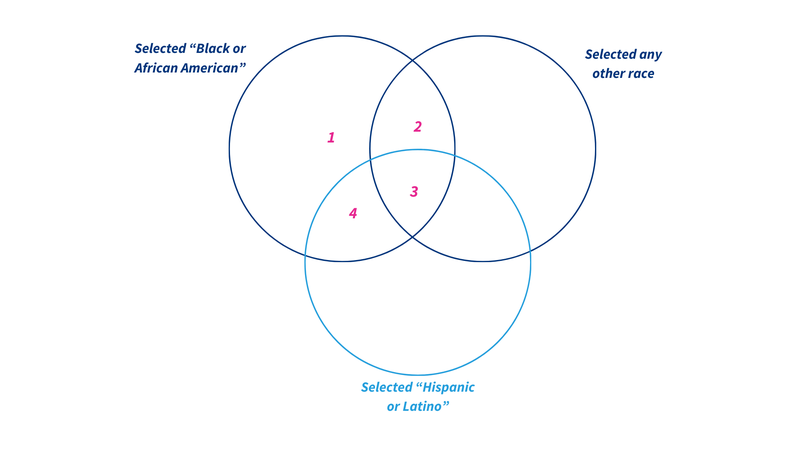The Black population in the US outnumbers the total population of any single state. It’s impossible to distill the experience of any population — or any individual — into data points, but government data offers some insight into how the broader Black American experience has changed in recent years.
Here are 10 data points that speak to the experience of some Black Americans.
Details on how the government counts Black Americans
Details on how the government counts Black Americans
Race and ethnicity data attempts to quantify human characteristics, which can be a challenge. The census asks people to identify with one or more race, including “Black or African American,” and separately asks if respondents are “Hispanic or Latino.” Because racial and ethnic categories are not mutually exclusive, and because government agencies use various aspects of census data for their own analysis purposes, you could describe the US Black population as any of the following groups:
a) People who selected only “Black or African American” for race and “not Hispanic or Latino” on the ethnicity question (segment 1)
b) People who selected “Black or African American” on its own or in combination with other racial categories, and “not Hispanic or Latino” on the ethnicity question (segments 1 and 2)
c) People who selected only “Black or African American” for race, regardless of what they selected on the ethnicity question (segments 1 and 4)
d) All people who selected “Black or African American” for race, regardless of what else they selected (segments 1, 2, 3, and 4)

Unless otherwise noted, this article will refer to option c, which includes Black people of Hispanic and non-Hispanic ethnic backgrounds but does not include people who selected additional races in the race question.
1. How big is the Black American population?
In 2022, 45.4 million Americans identified as Black (but by no other race in combination). That was 13.6% of the nation’s population of 333.3 million people. 12.6% of the country was Black and not Hispanic.
2. How many Black children are in foster care?
The share of children in foster care who were Black and not Hispanic decreased from 43% in 1998 to 22% in 2021.
Subscribe to get unbiased, data-driven insights sent to your inbox weekly.
3. How many Black people work in federal government?
In fiscal year 2021, 18.2% of the federal workforce identified as Black and not Hispanic, a larger share than the 12.6% share of the overall population.
4. How many Black people are in Congress?
More than one-third of Black people who have ever served as members of Congress are currently serving as of February 2024. This figure includes congresspeople who are Black either alone or as part of a multiracial identity, as well as Hispanic Black congresspeople. Of these 63 current Black members, four are in the Senate and 59 are in the House of Representatives.
Sixty-three of the 535 seats in Congress (11.7%) are held by Black members.
5. What is the state of Black homeownership?
From 2016 to 2022, Black homeownership increased 3.4 percentage points from 41.6% to 45.0%. Overall homeownership rates increased by 2.4 points (63.4% to 65.8%).
6. Is the Black poverty rate increasing or decreasing?
The percentage of Black people living in poverty decreased from 27.6% in 2011 to 17.1% in 2022.
7. How many Black people voted in the last presidential election?
The voting rate for Black Americans in the 2020 presidential election was 62.6%, up from 2016 but down from 66.2% in 2012.
8. How does Black union membership compare to the general population?
Since at least 2000, Black workers have been more likely to belong to a union than people in other racial and ethnic groups. In 2023, 11.8% of Black workers were unionized, compared to 10.0% of workers overall.
9. In which regions do more Black people live?
As of the 2020 census, 58% of the country’s non-Hispanic Black population lives in the South, compared to 18% in the Midwest, 16% in the Northeast, and 9% in the West.
10. Which state has had the most Black population growth?
From 2010 to 2020, the non-Hispanic Black population in Texas (including only those who selected “Black alone” in the census) grew by 557,887 people, the largest increase in any state. By percentage, North Dakota’s smaller Black population had the highest increase: 238.8%, or up to 18,432 people.
Learn more about the American population and get the data directly by subscribing to our newsletter.
Keep exploring
Page sources and methodology
All of the data on the page was sourced directly from government agencies. The analysis and final review was performed by USAFacts.

